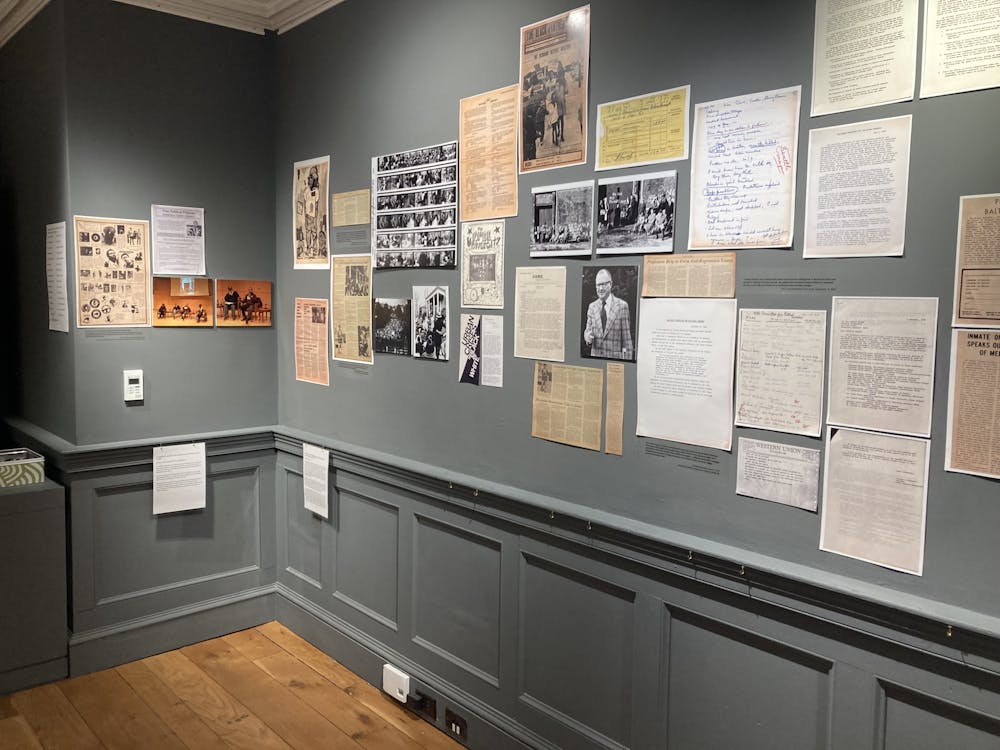The exhibition "Revolution in Our Lifetime": The Black Panther Party and Political Organizing in Baltimore, 1968–1973, was unveiled at The Peale, Baltimore’s Community Museum, on Friday, April 12. The exhibit will be available until May 26.
Curated by Hopkins and Morgan State University students, the exhibit features many primary sources, including never-before-seen material that provides insights into the Black Panther Party's Baltimore Chapter and political organizing during the period.
In an email to The News-Letter, Professor Victoria Harms, one of two Hopkins faculty members involved with the project along with Professor Stuart Schrader, shared the success of the opening panel.
"Over 100 people attended the roundtable conversation, and a record-setting total of almost 200 saw the exhibition on the first night! We were deeply impressed by the tremendous interest in our research findings and the history of the Black Panthers in the city," she wrote.
As a collaborative effort, the exhibition utilizes a variety of material from special collections at the University of Maryland, Baltimore County, the University of Baltimore, Hopkins and Goucher College, as well as documents by the FBI, the American Civil Liberties Union, the Freedom Archives and personal holdings.
Harms stated that gathering the artifacts for the exhibit was difficult. No organized collection could tell the entire story, and the history has been misconstrued in many sources.
"We started out with supposedly simple tasks such as discussing what secondary literature we were reading, compiling a list of relevant addresses to literally locate the Panthers in the city and identifying the members of the local chapter, associates and supporters, alleged and confirmed informants, police officers and representatives of the justice system who were involved in the repression, and so on," she wrote.
The exhibit aims to provide context of the racial segregation and bigotry that motivated grassroots political organizing as well as showcase how the police attempted to undermine and repress the Black Panther Party.
"Our team came together last year in response to the late Eddie Conway's passing. In many ways, the exhibition honours the late Mister Conway, a former Panther and political prisoner of almost 44 years, a lifelong organizer and political educator who used to speak to my 1968 seminar for three consecutive years," she wrote.
The main exhibition is divided into four distinct sections curated by Hopkins and Morgan State students. Each section explores a different aspect of the history of the Black Panther Party, from studies on the children of party members to individuals such as Rev. Chester L. Wickwire, former chaplain of Hopkins and founder of the Tutorial Project.
Emma Petite, a recent Hopkins graduate who majored in Political Science and International Studies with a concentration in Racial Politics, was one of four curators of the exhibit. Her section focused on carceral uprisings in Baltimore and Maryland over the period.
In an interview with The News-Letter, Petite described how she got involved with the project. Petite started by working with Schader, researching incarcerated people's experience during the COVID-19 pandemic, and through the courses “Introduction to Police and Prisons” and “Black Against Empire,” became interested in the Panthers.
"My goal is to become a civil rights attorney, and a lot of my coursework at Hopkins has revolved around learning more about how the history of the United States has systemically disadvantaged certain groups while purposefully elevating others,” she said. “This exhibit and research project really has been a continuation of my coursework and earlier research experiences at Hopkins.”
Petite hopes that, from the exhibit, people will better appreciate the importance of incorporating opinions and perspectives from non-traditional media. She believes that the primary value of their work is in broadcasting voices and narratives that are often neglected and offering attendees a different perspective on the subject.
In an interview with The News-Letter, Jingxing Zou, a junior majoring in International Studies and Applied Mathematics and Statistics, described his motivation for visiting the exhibit.
"As an international student, having visited the National Museum of African American History and Culture in Washington D.C. and the Reginald F. Lewis Museum, I have become more interested in learning more about the civil rights movement, and the Black Panthers are certainly an important part of the story," he said.
Among the materials showcased to tell the story of the Baltimore Black Panther Party are News-Letter articles written at the time. Featured News-Letter pieces served as historical sources — a record of events on the Homewood campus reflected contemporary issues in the Baltimore community.
"While some tended to regard the Black Panthers as politically violent, I think the exhibit was successful in highlighting the Black Panther's societal contributions in creating many of the social programs, such as the Free Breakfast for Children programs," Zou said.
Harms encouraged visitors to the exhibit to consider the context of the Black Panthers and the resistance they faced, and to learn from it.
"We want to invite visitors to reflect critically on the history of the Panthers and the narrative that has marginalized and maligned them for so long,” she wrote. “Many of the issues they sought to redress are still relevant today: poverty, especially childhood poverty, culturally relevant education, the carceral state, unaccountable law enforcement, community organizing among and together with the underrepresented and marginalized.”





